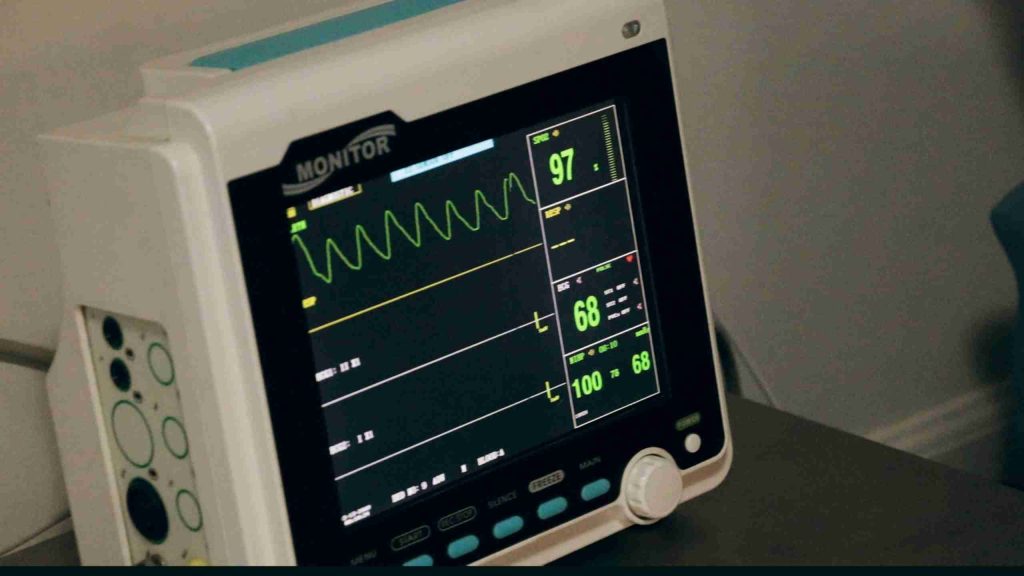The Ultimate Guide to Modern Embedded Firmware Development
Embedded firmware is specialized software programmed into embedded systems, enabling hardware to perform specific functions reliably and efficiently. It is essential to the functionality of everything from medical devices to smart home appliances. As embedded systems become increasingly complex and interconnected, the importance of robust and efficient firmware has only grown. Firmware developers face significant challenges, including constrained hardware resources, real-time performance requirements and debugging complexity.
To meet these challenges, modern development environments have evolved significantly. Tools like containerization allow developers to create portable, consistent build environments across teams and systems. CI/CD pipelines tailored for embedded systems help automate testing and deployment. Real-Time Operating Systems (RTOS) provide modular, scalable kernels for real-time performance. Combined with modern debuggers, cloud-based monitoring and simulation environments, these tools empower developers to build more reliable, maintainable firmware faster than ever.
This guide walks you through today’s most effective tools, workflows, and practices for reliable and modern firmware development. These insights should help you navigate the ever-changing world of embedded firmware with confidence.
Table of Contents
Core Programming Languages in Embedded Firmware Development
At the moment, there are several programming languages but the most popular for embedded firmware development are C, C++, Rust and Python. When used together, these languages form a powerful tool kit where C and C++ can be used for performance-critical applications, Rust can be used for safer systems when reliability is paramount and Python for prototyping, testing, automation and data analysis. You can see below a table where we compare these languages, their benefits, their challenges and common applications.
| Language | Benefits | Challenges | Applications |
|---|---|---|---|
| C |
|
|
|
| C++ |
|
|
|
| Rust |
|
|
|
| Python |
|
|
|
Modern Embedded Firmware Toolchains & Development Environments
Continuous Integration and DevOps Tools for Embedded
Continuous Integration (CI) and Continuous Delivery (CD) for embedded systems are key to improve reliability and reduce manual effort. CI systems such as GitHub Actions, GitLab CI, and Jenkins can automatically build firmware, run static analysis, ensure consistent results through containerized builds and store build artifacts. By encapsulating toolchains, dependencies, and environment configurations in containers, your team can achieve reproducible and isolated builds across development and testing stages. More complex CI setups can even flash and test code with unit tests or on real hardware through Hardware-in-the-loop (HIL) testing. This automation ensures that every code change is automatically built, tested and validated in a consistent environment. By leveraging reproducible CI pipelines, teams can catch issues early and maintain confidence that deployed firmware meets stringent performance, stability and integrity requirements. EmbedOps actually supports containerized CI pipelines and GitHub Actions which, as mentioned earlier, are key to the success of your embedded project.
Version Control Systems and Dependency Management
Version control systems, particularly Git, are indispensable in modern firmware workflows. Firmware projects often involve multiple hardware targets, build configurations, and third-party dependencies. Git enables teams to manage this complexity by providing a structured way to track changes, collaborate through branches, and maintain stable releases. Modern firmware workflows also include managing external code dependencies, toolchain and library version control. Fortunately, these things can be done cleanly by using tools like `git submodule`, VS Code extensions like nRF Connect, and using meta-tools such as`west` (used in Zephyr RTOS).
Debugging Tools and Emulators
Debugging and emulation tools have also seen major improvements. Hardware debuggers like SEGGER J-Link, ST-Link, and CMSIS-DAP remain essential for stepping through code and monitoring hardware peripherals. In addition, advanced features like protocol analyzers, real-time trace, printf-style RTT logging, and power profiling are also becoming more accessible to everyday developers for troubleshooting. For early development or CI environments, emulators like Renode and QEMU provide a virtual platform to simulate target devices, allowing for faster iteration and easier test automation without the need for physical boards. Platforms like Memfault offer you integrated debugging, remote crash analytics, and telemetry collection which extends observability in the field and helps your team identify and resolve issues in deployed devices. These tools significantly reduce development friction, especially in large distributed teams.
Integrated Development Environments (IDEs)
Integrated Development Environments (IDE) play a central role in embedded firmware development because they offer tightly integrated experiences for coding, compiling, flashing and debugging. Traditional tools like Keil µVision and IAR Embedded Workbench are widely used in industry due to their robust support for ARM Cortex-M devices and highly optimized compilers. These tools often provide deep integration with specific vendor SDKs and debugger hardware, which can save hours of configuration time. On the other hand, Visual Studio (VS) Code has gained popularity among modern developers thanks to its flexibility, strong plugin ecosystem, and compatibility with open-source toolchains like GCC/Clang as well as build systems like CMake. The choice of IDE often depends on project complexity, team size, licensing requirements and hardware support.
Enhancing Firmware Development Processes
Adopting Agile Practices in an Embedded World
Agile methodologies, like short iterations, continuous integration, frequent feedback, and cross-functional collaboration (e.g. between firmware, hardware and QA teams), originated as a reaction to traditional waterfall software practices. These methodologies allow projects to adapt to changing requirements and catch issues earlier. Embedded systems often have hardware lead times and certification gates that can make agile seem less useful, but practices like sprint planning, daily standups, and backlog grooming can be tailored to fit embedded timelines. The key is finding the right balance between Agile flexibility and the rigorous demands of embedded systems.
The Importance of Proper Testing
Testing is critical in embedded development, where undetected bugs can lead to costly field failures or safety risks. A layered approach to testing ensures better coverage and confidence in the systems. Development methodologies that prioritize testing—such as Behaviour-Driven Development (BDD) and Test-Driven Development (TDD)—are especially valuable when building software with quality and reliability in mind. Unit tests help verify low-level logic in isolation, often using frameworks like Ceedling and Google Test. System tests validate how components work together in broader firmware stack. HIL testing (mentioned earlier) takes it further by running tests on actual hardware with simulated inputs and outputs, capturing bugs that only appear in real- world conditions. The earlier these tests are integrated into the development process, the easier it is to maintain stability and catch regressions.
Automation of Repetitive Tasks
In modern development workflows, automation isn’t just a nice-to-have. It’s essential for maintaining speed and consistency. Tasks like building firmware, running tests, generating documentation, flashing boards and even updating change logs can be scripted and integrated into CI pipelines using tools like Make, CMake, GitHub Actions, GitLab CI, or Jenkins. Python, especially, plays a central role in automation. It is often used to streamline processes like the ones mentioned above and create custom scripts for parsing files and logs, or interacting with serial ports and debug probes. Python also provides very useful frameworks like pytest that can be used to automate testing including end-to-end integration and HIL testing. By automating repetitive tasks, teams not only save time but also reduce the chance of human error and ensure that every environment is reproducible and up to date. To make automation more convenient for you, EmbedOps helps automate builds, testing, and firmware deployment—all from one platform.
Managing Dependencies and Libraries Effectively
Firmware projects often rely on third-party libraries, Hardware Abstraction Layers (HAL), or SDKs provided by silicon vendors. Managing these dependencies can quickly become a mess if not handled carefully. It is important to have a clear policy for updating and testing dependencies, along with documentation on how they’re integrated, to help ensure long-term maintainability especially in teams with multiple developers or products.
Leveraging Cloud-Based Tools for Remote Collaboration
As embedded teams become more distributed, remote development and cloud-based tools have become invaluable for keeping everyone aligned. Platforms like GitHub, GitLab, and BitBucket provide integrated solutions for code hosting, issue tracking, and CI/CD. Cloud-based logging and monitoring platforms such as Memfault allow developers to gather crash reports and telemetry data from devices in the field, helping debug issues post-deployment. Even remote lab management solutions are emerging, enabling teams to share access to physical hardware for flashing and testing across different locations. These tools bridge the gap between firmware, hardware, and QA teams regardless of where they’re located.
Stay Ahead in Embedded Development
Want to keep up with the latest trends, insights, and best practices in embedded development? Subscribe to DojoFive’s blog and news updates to get exclusive articles, tutorials, and updates delivered straight to your inbox!
Challenges in Modern Firmware Development (and Solutions)
Tackling Memory Constraints and Limited Resources
One of the defining challenges in embedded firmware development is working within tight memory and resource limits. Many microcontrollers still operate with kilobytes of RAM and flash, requiring developers to be extremely efficient with their code. In this context, optimizing for memory often means avoiding dynamic allocation, minimizing stack usage, and using compile-time configuration wherever possible. Tools like static analyzers, map file visualizers, and size profiling utilities can help identify and reduce memory bottlenecks. Some effective strategies for squeezing the most out of limited hardware include choosing lightweight RTOSes, modular libraries, and link-time optimization (LTO).
Managing Compatibility Across Hardware Platforms
Supporting multiple hardware platforms, whether it’s different board revisions or entirely different MCU families, can quickly introduce complexity. Differences in pinouts, peripherals, memory maps and vendor SDKs requires careful abstraction to avoid duplicating code. A common solution is to implement or take advantage of platforms that leverage standardized APIs, HAL, Board Support Packages (BSP), Device Tree Systems, etc. All of these enable the abstraction of hardware from the core application logic which makes it easier to scale your code across boards or versions. Zephyr is a good example of a RTOS that emphasizes these abstractions to support portability across different hardware. C++ can also be used to structure drivers and code in a way that is clean, object-oriented and hardware-agnostic by leveraging C++’s strong support for abstraction and encapsulation. Additionally, using conditional compilation and build system tools like CMake can help organize codebases so the features can be enabled or disabled per target without requiring disruptive firmware changes.
Ensuring Security in Embedded Devices
As embedded devices become more connected through WiFi, BLE, cellular or Ethernet, the attack surface increases significantly. Ensuring device security requires attention at every layer: secure bootloaders in embedded systems, encrypted Firmware Over-the-Air (FOTA) updates, firmware encryption, secure key storage (on-device, in-repo, etc), and regular vulnerability assessments. Examples of best practices include:
- Implementing secure boot with cryptographic verification to ensure firmware hasn’t been tampered with
- Leveraging TLS/DTLS libraries like mbedTLS for secure communication
- Vendor-supported secure Device Firmware Update (DFU) protocols for secure updates
Building secure-by-design firmware is becoming a critical expectation for any connected device. It is important to remember that security is a mindset and not a one-time task.
Adopting New Languages and Tools Without Overwhelming Existing Processes
As the embedded ecosystem grows, new languages like Rust and modern tooling such as containerized environments, CI/CD pipelines and remote debugging platforms become more useful in building the more complex systems. However, adopting these innovations without disrupting a stable development process is a real challenge, especially for teams maintaining legacy code or teams with regulatory requirements. The key is to introduce change incrementally. Here are some examples of incremental changes:
- Python can be introduced for testing and automation without touching the firmware itself
- Rust modules can be integrated into C/C++ codebases using Foreign Function Interface (FFI) to enhance memory safety in isolated components
- Docker can be used to create reproducible build environments that coexist with traditional toolchains.
A gradual adoption strategy ensures innovation doesn’t come at the cost of stability.
Best Practices for Firmware Development
Writing Clean and Modular Code
At the heart of reliable firmware is clean and modular code. This means to write functions that do one thing well, organize code into reusable modules, leveraging design patterns and use consistent naming conventions (via tools like pre-commit for example). All of these go a long way toward improving maintainability. In embedded systems, where debugging can be tricky and hardware access is limited, clarity and structure matter even more. A modular design also makes it easier to test, port, and scale code across different projects or hardware platforms. As mentioned in the section for Managing Compatibility Across Hardware Platforms, using interfaces or abstraction layers can help decouple hardware-specific logic from the core application, making the codebase more adaptable and less error-prone over time.
Utilizing Static Code Analysis
No matter how experienced the developer is, subtle bugs can creep in, especially in C or C++ where memory management is manual. Static code analysis tools like Cppcheck, Clang-Tidy, or commercial options like PC-lint and Coverity can catch issues early before deployment by scanning source code without running it. These tools flag things like uninitialized variables, memory leaks, or risky pointer operations before they turn into runtime bugs. Integrating static analysis into your build process ensures a constant layer of automated feedback and helps enforce coding standards across the team.
Implementing Thorough Code Reviews
Code reviews are one of the most effective ways to improve code quality and share knowledge across the team. A good code review isn’t just about catching bugs but about asking the right questions, clarifying intent and ensuring that the code aligns with the broader system architecture. In order to build a culture of quality and collaboration, it is important to encourage thoughtful, respectful code reviews. It also prevents knowledge from becoming siloed with individual developers which makes the team more resilient in the long run. CI tools like GitHub and GitLab provide you with easy integrations of code reviews.
Creating Clear Documentation for Projects
Firmware projects often span months or even years, and without clear documentation, the context behind decisions can easily be lost. Maintaining up-to-date and organized README files, architecture diagrams, and in-code comments makes it easier for both current team members and future developers to understand and maintain the system. Even lightweight documentation, like a `docs/` folder with design notes and hardware schematics, can save hours of guesswork later. Tools like Doxygen can help generate API documentation automatically from annotated code, making this process even smoother.
Collaborative Workflows to Prevent Silos
Firmware teams are most effective when they collaborate closely, not just with each other, but with hardware engineers, QA, and product stakeholders. Using shared issue trackers, regular standups, and version control helps keep everyone aligned. Collaborative tools like GitHub Projects, Slack, or Notion can serve as centralized places for documentation, updates, and decision-making. The goal is to prevent isolated knowledge or “hero dev” patterns by making work visible, reviewable, and accessible across the team.
The Payoff: Scalable Firmware with Modern Embedded DevOps
Adopting modern tools and best practices in firmware development isn’t about keeping up with trends; it’s about building more reliable, maintainable, and scalable systems. From automated testing and CI pipelines to modular code and collaborative workflows, these approaches can dramatically improve both team efficiency and product quality. Navigating this evolving landscape can be challenging and time consuming, especially integrating legacy systems with new technologies. That’s where the experts at Dojo Five come in. With deep experience across a wide range of embedded platforms and workflows, we help teams streamline their development process, avoid common pitfalls, and get to market faster. If you’re ready to take your firmware to the next level, connect with Dojo Five today! We’d love to help!
Elevate your IoT devices with connectivity solutions that set the standard.
Connect with our team of embedded experts and take the first step toward delivering groundbreaking products—and a flawless user experience.
Interested in learning more?
Best-in-class embedded firmware content, resources and best practices

I want to write my first embedded program. Where do I start?
The boom in the Internet of Things (IoT) commercial devices and hobbyist platforms like the Raspberry Pi and Arduino have created a lot of options, offering inexpensive platforms with easy to use development tools for creating embedded projects. You have a lot of options to choose from. An embedded development platform is typically a microcontroller chip mounted on a circuit board designed to show off its features. There are typically two types out there: there are inexpensive versions, sometimes called

IEC-62304 Medical Device Software – Software Life Cycle Processes Primer – Part 1
IEC-62304 Software Lifecycle requires a lot of self-reflection to scrutinize and document your development processes. There is an endless pursuit of perfection when it comes to heavily regulated industries. How can you guarantee something will have zero defects? That’s a pretty hefty task. The regulatory approach for the medical device industry is process control. The concept essentially states that if you document how every step must be completed, and provide checks to show every step has been completed properly, you

IEC-62304 Medical Device Software – Software Life Cycle Processes Primer – Part II
Part I provides some background to IEC-62304. Part II provides a slightly more in-depth look at some of the specifics. The IEC 62304 Medical Device Software – Software Lifecycle Processes looks into your development processes for creating and maintaining your software. The standard is available for purchase here. So what activities does the standard look at? Here are some of the major topics. For any given topic, there will be a lot more specifics. This will look at a few
